-
Flood risk for New York City, New Jersey coast rising
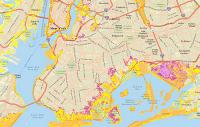
Flood risk for New York City and the New Jersey coast has increased significantly during the last 1,000 years due to hurricanes and accompanying storm surges. For the first time, researchers compared both sea-level rise rates and storm surge heights in prehistoric and modern eras and found that the combined increases of each have raised the likelihood of a devastating 500-year flood occurring as often as every twenty-five years. “A storm that occurred once in seven generations is now occurring twice in a generation,” says one of the researchers. What does that mean for residents along the New York/New Jersey coast? “An extra 100,000 people flooded in the region during Hurricane Sandy who would not have flooded if sea level had not been rising,” the researcher says of the 2012 storm.
-
-
Partnering to build climate change resiliency
South Florida ranks as the world’s most vulnerable urban region because of the large number of assets exposed to the effects of sea level rise. To build climate change resiliency, the Federal Emergency Management Agency (FEMA) partnered with Florida International University (FIU) to provide local community leaders with the knowledge and tools to assess and improve their capabilities to prevent, mitigate, respond to, and recover from climate impacts, including sea level rise, drought and wildfires, heatwaves, floods, powerful storms, and other hazards.
-
-
Hurricane lessons: Lamar U has developed contingency plans for its contingency plans
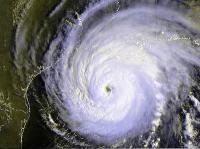
The idea of a contingency plan for a contingency plan would strike most people as somewhat silly, and most others as wasting time in a situation where time is a critical. For some time, the military has taught that when disaster strikes, the most effective means of calming one’s self is to perform a routine act, such as tying one’s shoe lacing, grading papers, or, in the case of the military, cleaning a weapon. The objective is to settle down in order to make a rational evaluation of the situation, and plan accordingly. The leaders of Lamar University, in Beaumont, Texas, reached the same conclusions after Hurricane Rita came roaring through the campus, and the university was sent reeling from $50 million in damage from the storm, which exposed the shortcomings of the school’s preparedness plans.
-
-
Climate change consensus extends beyond climate scientists
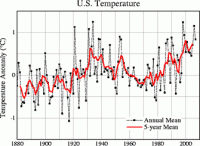
A survey of nearly 700 scientists from nonclimate disciplines shows that more than 90 percent believe that average global temperatures are higher than pre-1800s levels and that human activity has significantly contributed to the rise. The study is the first to show that consensus on human-caused climate change extends beyond climate scientists to the broader scientific community. Previous studies have shown that about 97 percent of actively publishing climate scientists believe in human-caused climate change, and a review of scientific literature on the existence of climate change indicated that about 97 percent of studies affirm climate change is happening.
-
-
Teams of computers and humans more effective in disaster response
Crisis responders need to know the extent of a natural disaster, what aid is required and where they need to get to as quickly as possible — this is what’s known as “situation awareness.” With the proliferation of mass media, a lot of data is now generated from the disaster zone via photographs, tweets, news reports and the like. With the addition of first responder reports and satellite images of the disaster area, there is a vast amount of relevant unstructured data available for situation awareness. A crisis response team will be overwhelmed by his data deluge — perhaps made even worse by reports written in languages they don’t understand. But the data is also hard to interpret by computers alone, as it’s difficult to find meaningful patterns in such a large amount of unstructured data, let alone understand the complex human problems that described within it. Experts say that joint humans-computers teams would be the best way to deal with voluminous, but unstructured, data.
-
-
Florida universities are national hub for hurricane mitigation research
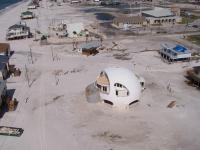
The National Science Foundation the other day announced grants to Florida International University and University of Florida totaling nearly $8 million that will position the state to become a national hub for research into making homes and businesses safer in hurricanes and tornadoes.
-
-
The Philippine islands should brace for the Big One: Scientists
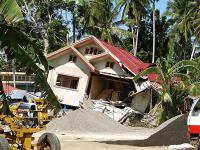
Seismologists say the Philippines should prepare for an 8.5 quake soon. The quake will be triggered by the West Valley Fault, which is a long fault running under six major cities. The scientists estimate the death toll will reach 34,000, about 4,615 kilometers of water distribution pipes will suffer 4,000 points of breakage. Thirty kilometers worth of electric cables will be cut and 95 kilometers of communication cables will be disconnected.
-
-
Rising seas, bigger storms may greatly magnify U.S. East Coast floods
Over the past century, the East Coast has seen sea-level rise far above the 8-inch global average — up to a foot in much of the Mid-Atlantic and Northeast, including New York City. Many studies predict that future sea-level rise along the U.S. Atlantic and Gulf coasts will increase flooding. Others suggest that the human-caused warming driving this rise will also boost the intensity and frequency of big coastal storms. Up to now, though, these two hazards have been assessed mostly in isolation from each other. Now, a new study quantifies how they could interact to produce alarming spikes in the combined height and duration of flooding. It projects that coastal flooding could possibly shoot up several hundredfold by 2100, from the Northeast to Texas.
-
-
El Niño, La Niña will exacerbate coastal hazards across entire Pacific
The projected upsurge of severe El Niño and La Niña events will cause an increase in storm events leading to extreme coastal flooding and erosion in populated regions across the Pacific Ocean, according to a multi-agency study. The impact of these storms is not presently included in most studies on future coastal vulnerability, which look primarily at sea level rise. New research data, from forty-eight beaches across three continents and five countries bordering the Pacific Ocean, suggest the predicted increase will exacerbate coastal erosion irrespective of sea level rise affecting the region.
-
-
More prescribed burns, less fire suppression the solution to growing wildfire problem
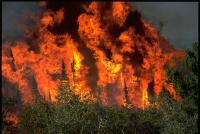
With nearly nine million acres burned this year across the nation, 2015 is shaping up to be one of the most destructive wildfire seasons yet in a decade strung with devastating fire seasons. With drought and climate change, wildfires are only predicted to get worse. Experts suggest that to cope with the growing wildfire problem, a new approach must be adopted, one which is based on more prescribed and managed burns, increased thinning, and less fire suppression.
-
-
Snowpack of Sierra Nevada lowest in 500 years, worsening California water woes

Snowpack in California’s Sierra Nevada in 2015 was at the lowest level in the past 500 years, according to a new report. “Our study really points to the extreme character of the 2014-15 winter. This is not just unprecedented over 80 years — it’s unprecedented over 500 years,” said the lead author of the report. On 1 April of this year, California Governor Jerry Brown declared the first-ever mandatory water restrictions throughout the state while standing on dry ground at 6,800-foot elevation in the Sierra Nevada. The historical average snowpack on that site is more than five feet, according to the California Department of Water Resources.
-
-
Burning world’s remaining fossil fuel could cause 60-meter sea level rise
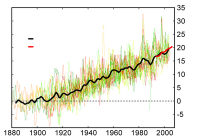
New work from an international team including Carnegie’s Ken Caldeira demonstrates that the planet’s remaining fossil fuel resources would be sufficient to melt nearly all of Antarctica if burned, leading to a 50- or 60-meter (160- to 200-foot) rise in sea level. Because so many major cities are at or near sea level, this would put many highly populated areas where more than a billion people live under water, including New York City and Washington, D.C. The researchers found that if global warming did not exceed the 2 degree Celsius target often cited by climate policymakers, Antarctic melting would cause sea levels to rise only a few meters and remain manageable. But greater warming could reshape the East and West ice sheets irreparably, with every additional tenth of a degree increasing the risk of total and irreversible Antarctic ice loss.
-
-
Pipeline replacement programs are effective
Aging infrastructure, including roads, bridges, and natural gas and water mains, is an increasing concern. In 2011 the U.S. Pipeline and Hazardous Materials Safety Administration issued a call to action to accelerate the repair, rehabilitation, and replacement of the highest-risk pipeline infrastructure. Invisible gas leaks from aging or damaged pipelines cost U.S. consumers billions of dollars every year, contribute to global warming and, in rare cases, cause dangerous explosions. Pipeline replacement programs in cities, however, can cut natural gas leaks by 90 percent, a new study finds. “The surprise wasn’t that replacement programs worked,” said the study’s lead author. “It was that they worked so well.”
-
-
Destructive Southern California wildfires belong to two distinct wildfires regimes
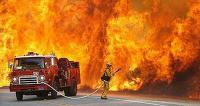
Wildfires have ravaged regions of Southern California at an increasing rate over the past few decades, and scientists are predicting that by mid-century, a lot more will go up in flames. In a new study, the scientists discuss two distinct wildfire regimes, those driven by offshore Santa Ana winds that kick up in the fall and non-Santa Ana fires that result primarily from hot, dry conditions in the summer.
-
-
Insider threats, organizational rigidity pose challenges for U.S. national security: Study
U.S. national security faces rising challenges from insider threats and organizational rigidity, a Stanford professor says. A new study says that in the past five years, seemingly trustworthy U.S. military and intelligence insiders have been responsible for a number of national security incidents, including the WikiLeaks publications and the 2009 attack at Fort Hood in Texas that killed 13 and injured more than 30. The study’s author acknowledges the difficulties of learning lessons from tragedies like 9/11, the NASA space shuttle accidents, and the 2009 Fort Hood shooting. She notes that policymakers tend to attribute failure to people and policies. While seemingly hidden at times, the organizational roots of disaster are much more important than many think, she added.
-
More headlines
The long view
Using Drone Swarms to Fight Forest Fires
Forest fires are becoming increasingly catastrophic across the world, accelerated by climate change. Researchers are using multiple swarms of drones to tackle natural disasters like forest fires.
How Climate Change Will Affect Conflict and U.S. Military Operations
“People talk about climate change as a threat multiplier,” said Karen Sudkamp, an associate director of the Infrastructure, Immigration, and Security Operations Program within the RAND Homeland Security Research Division. “But at what point do we need to start talking about the threat multiplier actually becoming a significant threat all its own?”
